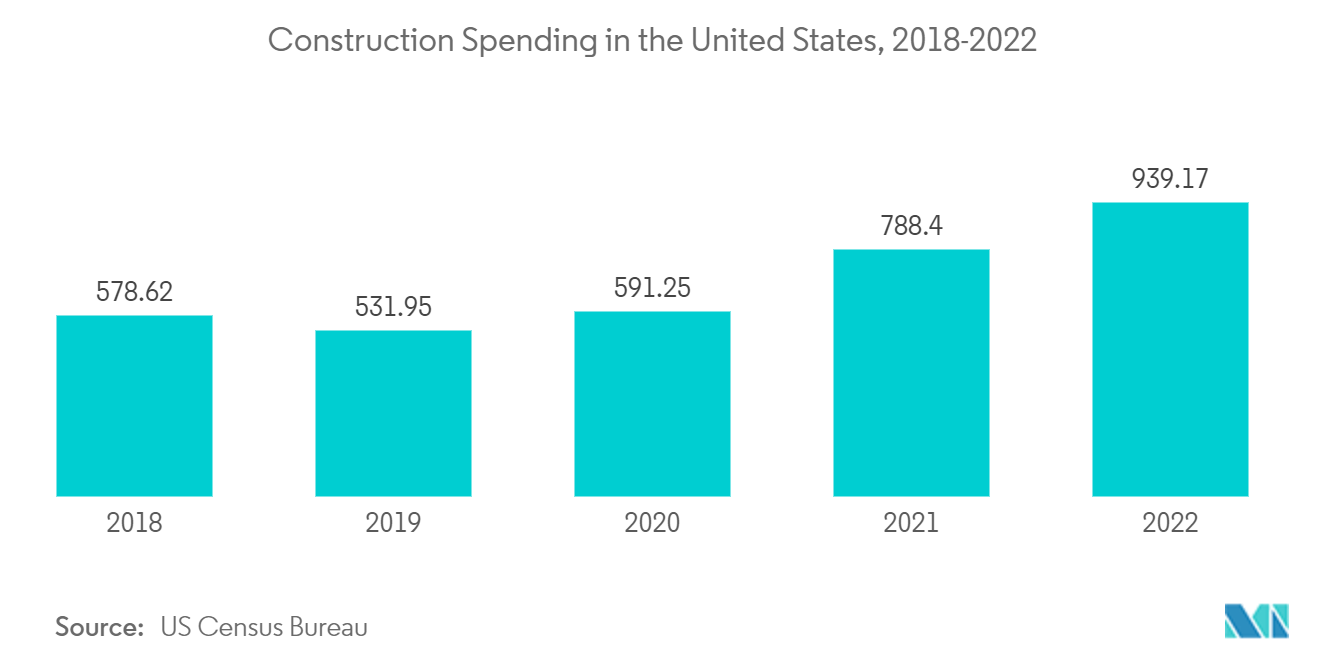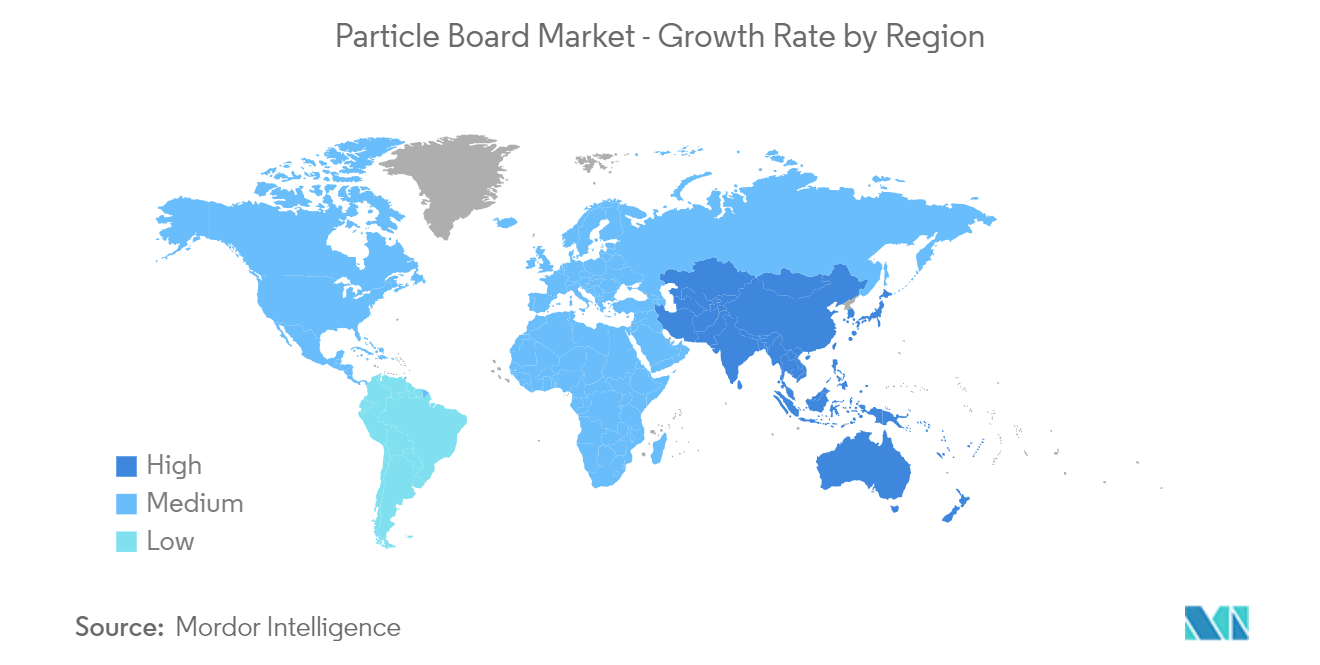Market Trends of Particle Board Industry
Construction Segment to Dominate the Market
- Particle board is widely used in construction as a building material for interior applications such as wall panels, flooring underlayment, roofing substrates, and door cores. The versatility of particle board makes it a popular choice for builders and contractors.
- The growing trends of modular construction, especially in residential and commercial projects, have increased the demand for prefabricated building components made from particle boards. These components offer cost-effective and efficient solutions for construction projects.
- The particle board market is expected to be stimulated by the increase in demand for flooring, cubical partitioning, wall panels, false ceilings, doors, and furniture as new office buildings are being built. In addition, it is expected that the demand for products will be stimulated in the coming period by renovation and refurbishment of old office buildings.
- China, the United States, and Germany hold the largest markets in the furniture industry. China is a significant exporter of wood furniture to Europe.
- According to the data released by the US Census Bureau, the spending on residential construction in the United States increased from USD 570.6 billion in 2018 to USD 881.9 billion in 2022.
- According to data published by Statistics Canada in June 2023, the investment in building construction increased globally by 0.4% in 2023, with the growth of the non-residential sector by 3.4% to USD 5.9 billion.
- Furthermore, according to the Middle East Economy, in Dubai, the value of real estate transactions increased by 37% annually during the first ten months of 2023. This exceeded the value of AED 500 billion (USD 136.2 billion).
- Thus, the above factors are expected to drive the global particle board market during the forecast period.

Asia-Pacific Region to Dominate the Market
- In view of the growing construction and furniture industry in countries such as China, India, and others, the Asia-Pacific region is expected to experience strong market growth for particle boards.
- As a result of the growing number of its people, increased income, and rapid urbanization, China is Asia Pacific's most extensive market base. Therefore, there will be a continuous increase in infrastructure development in the country.
- According to the data published by the Center for Strategic and International Studies (CSIS) on April 2023, in order to provide a home for approximately 1.4 billion people, the Indian government has been doing all that it can to boost housing construction. In the next seven years, approximately USD 1.3 trillion of investments in housing are expected to be made, and 60 million new homes will be built in the country.
- According to the data released by the National Bureau of Statistics of China, the value added in the Chinese construction industry increased from Yuan 6,549.3 billion (USD 909.8 billion) in 2018 to Yuan 8,338.3 billion (USD 1158.35 billion) in 2022.
- The propelling growth in Thailand's residential sector resulted from five major residential projects that started construction in the third quarter of 2021. The timelines for the completion of these projects revolve around 2024 to 2025. Moreover, according to the Department of Statistics of Malaysia, the value of building construction activities in Malaysia as of the fourth quarter of 2023 was MYR 16,578.54 million (USD 3,463.24 million).
- Thus, the growth of the particle board market in the Asia-Pacific region is driven by growing construction activity and an increasing trend to use engineered wood products as interior furniture, which has a positive impact on demand for particle boards.


